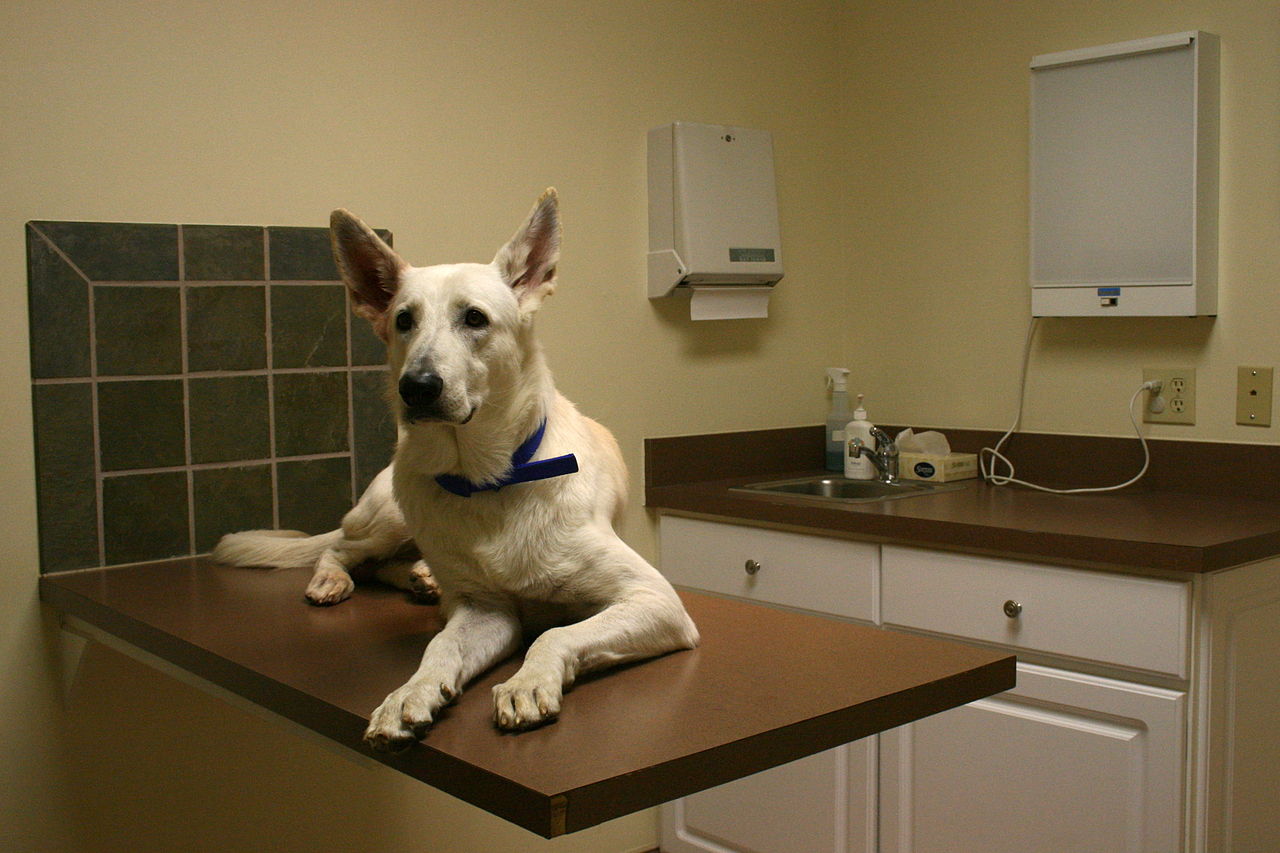Dr. Demian Dressler of the Dog Cancer News blog, informs us that there is new technology in the area of brain cancer. Dr. Dressler further states that brain cancer is one of the most difficult to fight due to “the blood-brain barrier.” These are tiny blood vessels, capillaries, that form bunches and don’t allow things […]
Dog Diseases
There are a number of diseases dogs are prone to and I’ll talk about some of them here. I’ll also try to include specific breeds of dog that are prone to certain illnesses and diseases.
I would advise you to be aware of your dog’s normal behavior. Signs of illness can be lack of appetite, decreased activity, weakness, not drinking much, not grooming, bad breath, sleeping more than usual, drooling, vomiting, diarrhea, coughing, trouble breathing, frequent and/or bloody urination. If your dog exhibits any of these symptoms or any behavioral changes and you are unsure of what to do, seek the advice of your veterinarian.
Things you need to know:
The normal color of a dog’s gums is pink. Pale, white, blue or yellow gums, contact your vet at once.
Normal temperature for a dog is 100-102.5 degrees Fahrenheit. Less than 99 degrees or over 104 degrees, contact your vet immediately.
A dog’s heart rate slows and speeds with each breath. This is not abnormal. You can check the heart rate by finding the femoral artery inside the back leg. Small dogs and puppies heart rate is 120-160 beats per minute. Dogs that are about 30 lbs. have a rate of 60-120 beats per minute. The larger the dog, the slower the heart rate.
A dog’s normal respiration rate is 10-30 breaths per minute. Panting can be up to 200 pants per minute.
To check if your dog is breathing, hold a tissue or mirror up to his nose. If there is movement or breath on the mirror, your dog is breathing, but get him to the vet immediately.
Problem signs are using the abdominals to breathe, gasping, loud noises, shallow breaths, difficulty exhaling. Call your vet immediately.
If you have any questions, I’ll be happy to answer them.
Note: Many new pet owners do not know about the availability of pet health insurance. Insurance for your dog is a great safety net to have for unforeseeable emergencies or illnesses. It is also helpful in covering routine shots and exams. Some plans start at just five dollars a month. To compare pet insurance plans in your area check out the link above.

Laryngeal Paralysis in Pets
Laryngeal Paralysis usually develops slowly over a period of time. It generally affects older dogs, horses, rarely cats, but can occur in young pets as well. It is usually seen in larger dogs over 40-50 lbs. such as Labrador Retrievers, Golden Retrievers, Siberian Huskies, Newfoundlands and St. Bernards. It appears that Labradors are more prone […]

Invermectin Sensitivity
Invermectin Sensitivity is a disease is which dogs become overly sensitive to certain drugs including invermectin which is found in some heartworm and mite preparations. Certain breeds are particularly prone to this disease: collies, Australian Shepherd Shetland Sheepdogs, Old English Sheepdogs and English Sheepdogs. In other breeds, excessive doses (10-20X the recommended dose) are dangerous. […]

Adenovirus
Adenovirus is a contagious virus that affects all mammals, humans and their pets, and birds. There are two types, 1 and 2, Type 1 being the more serious as it attacks the liver causing it to hemorrhage which can result in shock and death. Type 2 can cause respiratory infection and if left untreated, pneumonia. […]

Musculoskeletal Disorders
Some musculoskeletal disorders are genetic, some occur through injury, while others usually appear in older pets. You will find more in-depth descriptions of these disorders in the index. Hip Dysplasia is the malformation of the hip joint. It occurs mainly in large breed dogs and is usually genetic. Arthritis is inflammation of the joints. It […]

Promising Treatment for Lymphoma
Lymphoma, a common cancer in dogs is usually fatal, but is one of the cancers where life can be extended for long periods of time. Canine non-Hodgkins Lymphoma originates in the white blood cells called lymphocytes. They circulate throughout the body and normally protect it from infection. The abnormal lymphocytes build up in the lymph […]

Viral Papillomas in Dogs
Small, circular skin tumors known commonly as warts are caused by the papilloma virus. The virus has a 1-2 month incubation period and can be transmitted to other dogs through direct contact with a lesion. It CANNOT be transmitted to humans or other animals. It is very rare that the warts become cancerous. These wart-like […]

Hip and Elbow Dysplasia
Hip Dysplasia occurs when the ball and socket of the hip joint don’t fit properly. This malformation can cause pain and lameness, eventually becoming arthritic. There are several options available to help alleviate the problem. Pain killers and restricted exercise are two methods used. Another is removal of the head of the femur. Today, acupuncture […]

Brain disorders
Epilepsy – brain disorder resulting in periodic seizures The following breeds are prone to epilepsy – Brittany Spaniel, Welsh Springer Spaniel, Vizsla, Italian Greyhound, Poodle, Schipperke, Bearded Collie, Pembroke Welsh Corgi, and Dogue de Bordeaux. Seizures – Greater Swiss Mountain Dogs, Norwich Terriers, Papillons, Belgian Sheepdogs, Belgian Tervuren and Border Collies appear to have a […]

Dog Allergies
Allergies – Dogs can be allergic just as humans can, to certain foods (wheat, soy, corn, preservatives, even meats, chicken, eggs, etc.), to plants, to insect bites (fleas, ticks, etc.), dust mites and molds to name a few. If the allergy affects the skin itching can be most severe on the feet, flanks, groin, armpits […]
